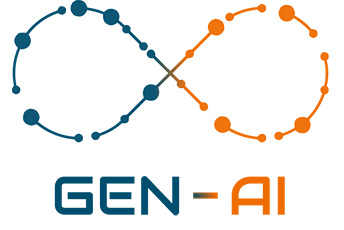Retail and Logistics (Retail Companies, Ecommerce, Logistics, and Distribution)
Scenario:
In the retail and logistics sector, companies handle large volumes of physical and digital documents daily, such as product labels and delivery notes. These documents contain essential information for inventory management, shipment tracking, and supply chain optimization. Manually reviewing this information to enter it into management systems is a slow and error-prone process. A multimodal chatbot combined with a semantic extractor based on OCR + Computer Vision + LLM can automate this process, accelerating the logistics flow and improving efficiency.
How Integration Works in the Retail and Logistics Sector
- Multimodal Interaction with the Chatbot:
– Employees of retail and logistics companies can interact with the chatbot in various formats:
– Text: Requesting information about products, shipments, or delivery notes.
– Images: Uploading scanned images of product labels or delivery notes for processing.
– Audio: Making verbal inquiries about products or shipments, which the chatbot can process to provide real-time information.
- Processing Product Labels and Delivery Notes:
– OCR: The multimodal chatbot uses OCR to convert images of product labels and delivery notes into readable text. This includes capturing key information such as barcodes, tracking numbers, product names, and quantities.
– Computer Vision: Analyzes images to automatically identify key fields in labels or delivery notes, such as barcodes, company logos, and other visual elements that may be useful for automatic classification.
– LLM (Large Language Model): After extracting text, the LLM interprets and organizes the information, allowing the system to classify products, record quantities, and automatically update information in inventory or shipment tracking systems.
- Automation of the Logistics Process:
– The system can automatically process product labels and delivery notes:
– Reading Product Labels: The chatbot can capture key information from labels, such as SKU codes, prices, quantities, and product descriptions.
– Processing Delivery Notes: It can extract details from delivery notes, such as order number, delivery date, carrier name, and delivered products. This information can be sent directly to inventory or logistics management systems for automatic updates.
- Real-Time Response:
– Text: The chatbot can provide a summary or specific details about products or shipments, answering questions like “What is the tracking number for this delivery note?” or “How many products are in this batch?”.
– Images: The chatbot can also provide a processed version of the delivery note or label with key elements highlighted.
– Audio: Employees can ask verbal questions about products or shipments and receive automated responses in real time.
Advantages of Integration in the Retail and Logistics Sector
- Automation of the Logistics Workflow:
– The system enables companies to automatically process large volumes of product labels and delivery notes, eliminating the need for manual data entry. This accelerates the logistics process, reducing the time needed to register products in warehouses and process deliveries.
- Improved Inventory Management:
– The information extracted from product labels can update inventory systems in real time, improving the accuracy of stock records. This helps prevent errors in stock control and allows for more informed decisions regarding product replenishment.
- Supply Chain Optimization:
– By efficiently processing delivery notes, the multimodal chatbot facilitates shipment tracking and updating logistics management systems. This allows companies to better monitor the status of shipments, reduce delays, and optimize product distribution.
- Reduction of Human Errors:
– Manual processing of labels and delivery notes is prone to errors, especially in large-scale operations. By automating this process with OCR + Computer Vision + LLM, data entry errors are minimized, ensuring that all information is accurate and up to date.
- Scalability:
– The system is highly scalable, allowing companies of any size, from small ecommerce stores to large distribution firms, to automatically process hundreds or thousands of labels and delivery notes seamlessly.
- Improved Customer Experience:
– By keeping inventory and delivery systems updated in real time, companies can provide accurate information to customers regarding product availability or the status of their shipments. This significantly enhances the customer experience and reduces repetitive inquiries to the support team.
- Integration with ERP and Inventory Management Systems:
– The information extracted by the multimodal chatbot can be directly integrated with enterprise resource planning (ERP) or inventory management systems, automatically updating records and eliminating the need for repetitive manual tasks.
Example Workflow in a Multimodal Chatbot for Retail and Logistics
– Case 1: A warehouse employee uploads an image of a product label.
– Chatbot: “Processing the product label…”
– Chatbot Response: “Product: Sports Shoes, SKU: 12345, Quantity: 50 units, Price: 75 euros per unit.”
– Case 2: The logistics manager uploads an image of a delivery note to update the inventory system.
– Chatbot: “Processing the delivery note…”
– Chatbot Response: “Order: 54321, Delivered by: Transportes XYZ, Delivery date: October 16, 2024, Products: 200 units of t-shirts.”
– Case 3: The operations manager makes a verbal inquiry about a shipment.
– Chatbot: “What is the tracking number for delivery note 67890?”
– Chatbot Response: “The tracking number is TRX456789123, delivered on October 15, 2024.”
This integration of a multimodal chatbot with a semantic extractor based on OCR + Computer Vision + LLM for retail and logistics optimizes the reading of labels and delivery notes, streamlines inventory and delivery processing, improves the supply chain, and reduces administrative workload, resulting in greater operational efficiency and better customer experience.


